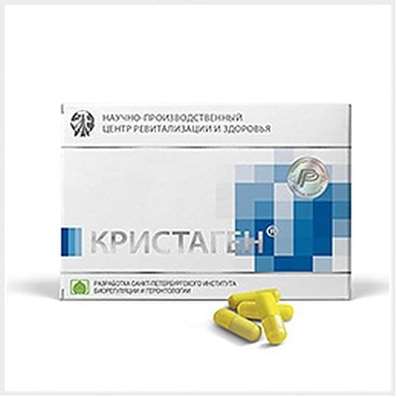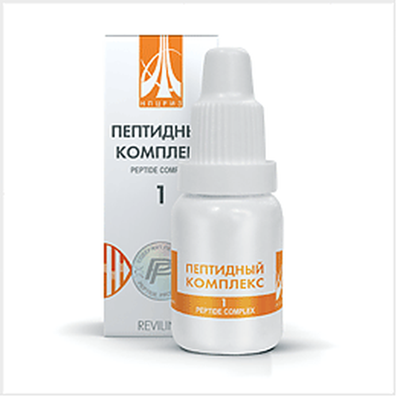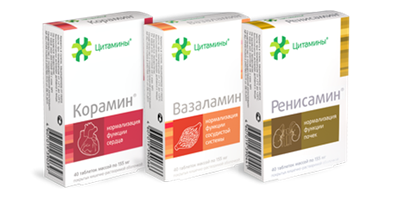Complex formation of medicinal substances with receptors
30 Nov 2016
It is known that secondary pharmacological reaction develops owing to interaction of medicinal substance with a receptor. As the receptor represents a certain molecular structure, therefore, and interaction shall be determined by molecular essence of medicinal substance and a receptor. If physical and chemical properties of medicinal substances are in most cases well studied, then it still can't be told about receptors.
In works of P. Ehrlich, K. Bernard, N. P. Kravkov and other authors original hypotheses of pharmacological reception are for the first time formulated. In particular, P. Ehrlich specified certain groups of macromolecules with which chemicals can interact. In subsequent some scientists studied the mechanism of action of acetylcholine, adrenaline and noradrenaline, histamine, M - and N-holinomimetikov, M - and N-holinolitikov on the isolated bodies, muscular tissue, synoptic plates and other objects (Clark, Ariyens, Stefenson, Peyton, Ing, Mac Kay, etc.).
The community of these theories is that the attempt to analyse the mechanism of effect of pharmacological medicines, proceeding from the concept that the pharmacological answer develops after its adsorption on a receptor was made. Consider that pharmacological of active agents physical process of adsorption with all that it implies is the cornerstone of effect. The analysis of isotherms of adsorption of Lengmyur and application of the main equations by means of which the isotherm is described allowed to receive quantity characteristics of adsorption.
The appendix of the law of the operating masses to difficult equilibrium system can be provided as follows:
It should be noted, however, that the called regularities to a certain extent become complicated because of metabolism of medicinal substances, additional redistribution and other reasons. Let's try to review briefly the main hypotheses of the mechanism of effect of medicinal substances.
1. The simple occupational theory has been offered by Clark. In his opinion, the effect caused by any medicinal substance is proportional to the size of a surface of the receptors occupied with this substance. The maximum effect is reached when all receptors are occupied with medicinal substance.
2. The difficult occupational theory was developed by Ariyens. Trying to fill discrepancies of the theory of Clark, Ariyens has put forward the provision that medicinal substance has to possess two independent characteristics, namely, affinity to a receptor and internal or own activity. For some pharmacological medicines it is enough only affinity to a receptor while it is necessary for others that they had internal activity. Internal activity, on Ariyens's terminology, is a measure of ability of such complex to cause positive biological reaction.
3. Further development of the called provisions took place in Stefanson's works. He claimed that in some cases activity of pharmacological medicines is disproportionate to number of busy receptors. Medicinal substances which cause the biological reaction, maximum for this body, at very small number of receptors are considered as highly effective.
4. Peyton's concept which main thesis is the speed of formation of a complex medicinal substance — a receptor is submitted original. Extent of saturation of a receptor medicinal substances at the same time has no essential value. On the basis of the researches Peyton considers that if medicinal substance long doesn't linger on a receptor, then it is a stimulator of functions and if pharmacological medicine slowly dissociates from a complex with a receptor, then he is an antagonist.
5. In the subsequent works of Ing suggested that the complex medicinal substance — a receptor can be in the activated transition state which determines pharmacological action. Such activated complexes which are formed in various reactions are characterized by the high level of energy and, therefore, are short-lived. They or quickly dissociate, or energies, (steady) with a small inventory, which inhibit receptors turn into complexes.
6. Observation about activation of transport of Sa2 + is of great interest in case of interaction of agonists with receptors (Hurwitz et al., 1972). Authors consider that one of reactions in case of interaction of agonists with receptors is activation of transport system of calcium depending on number of busy receptors.
Application of a mathematical apparatus for the purpose of the analysis of results of experiments allowed to conclude that interaction of acetylcholine or noradrenaline with adreno-or holinoretseptor leads to activation of transport of Sa2 + according to number of busy receptors. Believe that the complex a receptor — a mediator or creates a time for Sa2+, or is a carrier of Sa2 + through a biological membrane.
As calcium takes part in muscular contraction, and also is responsible for structural integrity of biological membranes, these data are very important for the analysis of function well-cared and adrenoceptors. You can also like Chitomur.
These concepts, certainly, during a certain period of development of pharmacological science were useful and gave a lot of valuable information, concerning organ relations in case of impact with medicinal substances. Regularities of communication of chemical structure with biological effect among ho-linomimetik, holinolitik and other medicines were revealed.
Allocation of a receptor in pure form, determination of its chemical structure and functional groups is a foremost task in a research of complementary relations with pharmacological medicines. "Dismantling" and subsequent "assembly" of a receptor with recovery of its functions — one of important points in a chain of proofs of pharmacological reception. In these conditions it is possible to find out a role of this or that component (if a receptor not monomolecular) in interaction with the pharmacological partner and to create model of primary pharmacological reaction which can be subjected to strict quantitative control with attraction of a mathematical apparatus.
One of necessary conditions of interaction of medicinal substance with a receptor is the optimum distance between molecules when intermolecular forces can work. These forces act on rather short distance and their action disappears in case of excess of distance 12 A, i.e. it is possible to consider that intermolecular forces act on the distance equal to diameter of 1 — 2 molecules. For a research of transport of substances in a radius of their collision determine the speed of the limited reactions. Decrease in this size indicates sterichesky and power difficulties in a complex formation. The mathematical theory of the diffusive limited reactions has been developed by Smolukhovsky who studied kinetics of coagulation of colloids electrolytes. The author calculated the speed of diffusion of molecules in a sphere cavity by means of the following formula:
In case the complex medicinal substance — a receptor occupies large volume, then it is possible to consider that g0 = RD as spatial compliance of pharmacological medicine to the complementary site on a receptor molecule takes place. For rather big molecules, such as, polypeptides, it not always so as only a part of a molecule takes part in a complex formation. For this case of kt = 2,5*109 l are mol - 1s-1 at a temperature of 37 °C.
Universal dependence of a constant of speed on viscosity is of a certain interest.
This dependence needs to be considered in the analysis the reactions of association. As viscosity of the diluted solutions goes down for 20% at decrease in temperature by each 10 °C, speed constant size, respectively, will increase by 25 — 30% at adequate rise in temperature. In chemical kinetics change of speed from temperature is usually expressed Arrhenius's equation:
This energy reflects effect of the closed space as each molecule of the dissolved substance is densely surrounded with solvent molecules. Kinetic energy which represents that minimum of energy of activation which is necessary for release and a complex formation is necessary for release of a molecule of the dissolved substance.
Calculation of energy of activation and her dependence on viscosity — an important and necessary element of assessment of the diffusive limited reactions. Viscosity of solutions, as we know, considerably increases at introduction of high-polymeric connections, such as proteins, nucleinic acids, a dextrin, kollidon. However it is represented improbable that they influenced the speed of the diffusive limited reactions.
Formation of a complex of pharmacological medicine with a receptor depends from both partners, caused by intermolecular forces. Everything together they create big force field on the surface of receptors which attracts molecule of medicinal substance. Force of the receptor field determines the different speed of "bombing" of a receptor pharmacological medicine and in case the receptor has affinity to medicine, the speed of his interaction with medicine will increase. In the presence of pushing away forces the speed of formation of a complex will decrease. This effect can be cooperative and pays off on Fick's equation: Formala8.jpg
The solution of this equation allows to connect k speed constant brought out of Smolukhovsky's equation with a factor of f which is calculated on the following equation:
For many medicines will sell to change as molecules thanks to rotation of deputies around valent communications can have various conformations. From these conformations can only one have the maximum number of communications with a receptor surface therefore for assessment of a complex formation of pharmacological medicine with a receptor it is very important to know conformational effects of molecules of drugs.
According to the theory of antagonism of medicines if the receptor is occupied, then it can't attach a molecule of other substance. This rule not without exception. However if certain sites in a molecule of medicinal substance or a receptor have affinity for widespread low-molecular components of biological solution (with inorganic ions or molecules of water), then molecules of pharmacological medicine and a receptor won't be able to interact on these busy sites. If medicine represents cations, and the anion site is provided on a receptor, then in case of occupation of the anion site ions of alkaline metal, for example Na+, access to a receptor will be sterically complicated as presence of ions of Na + will cause electrostatic pushing away of medicine — a cation. This classical provision of the theory of elekrolit, in particular theories of forming of ionic couples. Small monovalent ions with a radius about 2 And in case of concentration of 0,15 M have degree of association, equal 10%. Possibly, this provision can be extended also to molecules of drugs with a clause that rather big molecules of the last will lower degree of association in ionic vapors. It isn't possible to interpret, however, this rule on a receptor.
The probability of finding of pharmacological medicine within force field of a receptor can be calculated under Boltzmann's law. If to assume that the molecule of medicine moves unambiguously either to a receptor, or from it, then it will move until its own kinetic energy is balanced with a potential energy of new localization. Pharmacological medicine has an opportunity to go beyond force field of a receptor only if its kinetic energy will be more potential energy of the field. Frequency of motion of the molecules can be calculated on a kinetic energy from Boltzmann's equation.
Having provided value u = — 10 kcal of mol-1, we have the molecule getting out opportunity of force field equal 10-7 in relation to probability of its return to force field.
These relations determine power of a complex medicine — a receptor and speed of its dissociation. Absolute speed of dissociation is equal to the speed of the free diffusion increased by probability coefficient. The relative duration of existence of molecules of drugs in force field of a receptor specifies formation of effective complexes. Calculation of time of implementation of all the konformatsioinykh of reorganizations in a complex medicine — a receptor barks result of 4 — 10-9 pages. Time of formation of additional communications constitutes 10-9 — 10-11 pages. If a free energy in case of equilibrium conditions of a complex and the correct conformation we accept for — 10 kcal - mol - 1, and decrease it in case of the distorted conformation for — 2 kcal/mol, then life expectancy of a complex will make 10-8s (provided that the speed of association will determine a possibility of the maximum diffusion). Actually the speed of association is less, and life expectancy of a complex longer. The exception is constituted by cases when the receptor is deeply disguised in crevices of a receptor surface or when pharmacological medicine is strongly asymmetric molecule. In this case affinity between partners of reaction is broken.
The attempt to compare results of theoretical calculations with experimental data was made (Burgen, 1966). It was succeeded to calculate that a half of time of diffusion of atropine from a receptor, equal to the sizes of radius of one its molecule, constitutes 3*10-10 pages. At the same time the constant of speed of dissociation equals 2,3-109s-1. The real constant can be received by multiplication of this size by a constant of probability of Boltzmann, i.e. will be equal to 1,02-10-9. Value k2 will be equal 2,3 with-1. This value much more exceeds experimental result. Low speed of association of connections in a complex or conditionality of decrease in efficiency of collision in view of hydration and ionic occupation of receptor sites, and also the geometrical features of a molecule limiting diffusion can be the cause of such discrepancy. In the first case the free energy of a complex formation increases as it will correspond to effective concentration of substance in the diluted solution, but not to the actual concentration. Energy of activation at the same time will be equivalent to increase in a free energy of activation — 4,5 kcal - mol - 1. Boltzmann's factor will be equal 7,2*10-3, size to, = 1,65*10-3 with that is very close to experimental values. Comparison of results of observations leads to a conclusion that diffusion limits both association, and dissociation of complexes.
Geometrical difficulties (hindrances), judging by results of experiments, are expressed poorly. Certainly, difficulties interfere with diffusion of drugs towards a receptor and from a receptor. The coefficient pays off as follows:
K/2,5*109
Having increased the received results by the size k2 we will receive true values k2 for this complex.
Thus, rate of association of pharmacological drugs with receptors is peer to 2,5*109 l - mol - 1*s-1. At the same time the general energy of activation makes 3 — 4 kcal - mol - 1. Rate of association significantly doesn't change at attraction augmentation between molecules of pharmacological drugs and receptors and goes down in the presence of pushing away forces between them. Rate tends to depression in the presence of the water bound to a receptor or the ions due to ascending of energy of activation demanded for combinational reorganizations and access of drug to a receptor. Remission of drugs comes from a complex in case of acquisition of the kinetic energy surpassing potential energy of force field in size by them. Rate of dissociation of a complex is peer in size of rate of fading of the free diffusion increased by Boltzmann's factor. Life expectancy of a complex pharmacological drug — a receptor is sufficient for different adverse collisions of a complex with other bonds and conformation reorganizations.
Substratny receptors are of special interest for pharmacological drugs. Development of these questions is also "key" for a comprehension of a metabolism of medicines.

 Cart
Cart





